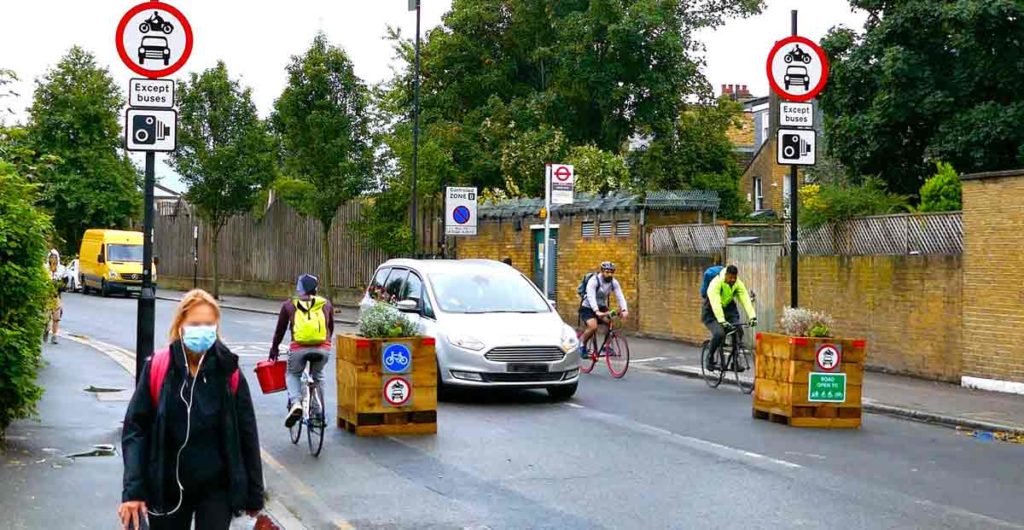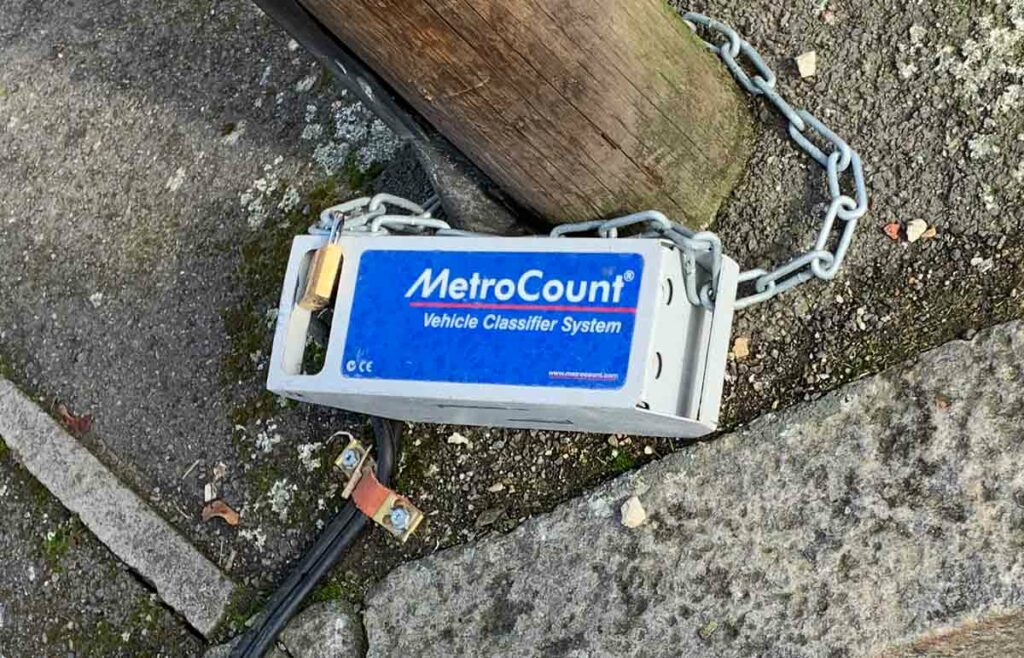
First results from monitoring of the Railton low traffic neighbourhood (LTN) show it has reduced motor traffic in and around the area, Lambeth council said today (3 March).
“Interestingly,” the council said, “some residents felt the LTN had increased traffic on boundary roads such as Coldharbour Lane or Dulwich Road, despite traffic levels falling on Dulwich Road and parts of Coldharbour Lane.”
The council produced the first stage monitoring report by analysing the latest figures against a baseline number of journeys.
The counted changes in traffic found:
- Overall car journeys are down by more than 75 per cent on Railton Road itself, while bicycle journeys have increased by a similar percentage.
- Cars and HGVs on peripheral roads have also generally decreased, while cycle journeys have increased. When taking into account both roads inside the LTN and the boundary roads, motor vehicle traffic fell by 31 per cent.
- Within the Railton LTN area there has been a 58 per cent decrease in car journeys along with a 43 per cent reduction in HGVs. This has also led to an increase in bicycle journeys of 51 per cent within the Railton LTN.
- Car journeys on the periphery of Railton LTN have also decreased by 21 per cent, along with a 14 per cent reduction in HGV traffic. There has been a 17 per cent increase in cycle journeys on periphery roads.
Last summer the council produced an emergency transport response plan to include introducing an LTN in the Railton Road area in response to the significant challenges the pandemic posed to the borough’s transport system.
Capacity on public transport was reduced by up to 80 percent to accommodate social distancing.
The council decided urgent measures were needed to protect residents in the area from road danger as they spent more time walking, cycling, scooting and wheeling.
A temporary traffic order (TTO) issued in June last year established the Railton LTN and the council committed to regular, detailed monitoring of journeys as well as feedback from residents.
The TTO was replaced by an experimental traffic order on January 18 this year when enforcement began.
LTNs in Lambeth are monitored as part of the council’s low traffic neighbourhoods monitoring strategy and assessed in up to three separate stages to understand how they are performing and to make improvements, the council said.

Councillor Claire Holland, deputy leader for sustainable transport, environment and clean air, said: “We have worked with residents since the start of the pandemic to ensure we do all we can to reduce through traffic levels on the smaller residential roads in our borough to make it safer for people to walk, wheel, scoot or cycle locally during the pandemic.
“The results of the first stage of monitoring are really positive and show that we are succeeding in reducing the number of car and lorry journeys in and around the Railton LTN, which in turn will make it much safer for many residents, particularly more at-risk pedestrians such as disabled pedestrians, who are four times more likely to be the victim of a collision with a car than other pedestrians.
“The increase in the number of cycle journeys is also an excellent indication that the scheme is having a positive impact, indicating that people feel the conditions are much safer on Railton Road.”
Between June and December last year the council received more than 600 responses from Lambeth residents on how the scheme was working and what improvements could be made.
Many residents felt the Railton LTN had already improved their feelings of safety, increased confidence in cycling and improved quality of life, the council said.
There have also been calls from residents to increase the number of road signs as well as introduce more bicycle parking, increase enforcement and introduce further speed reduction measures, the council said.
“We will continue to monitor the scheme through objective data collection and listen to feedback from residents in our borough as we progress,” said Cllr Holland.
The full report is available on the council website. The council said it would continue to monitor the Railton LTN and publishing a stage two report later this year.
Updates on the project and details of how to contact its team are on a Commonplace engagement site.






